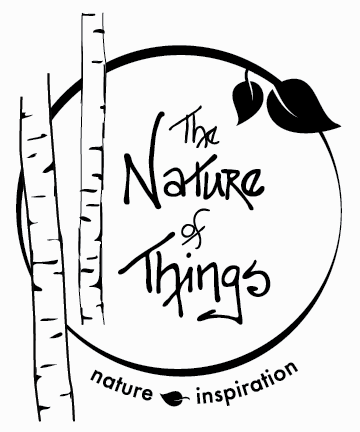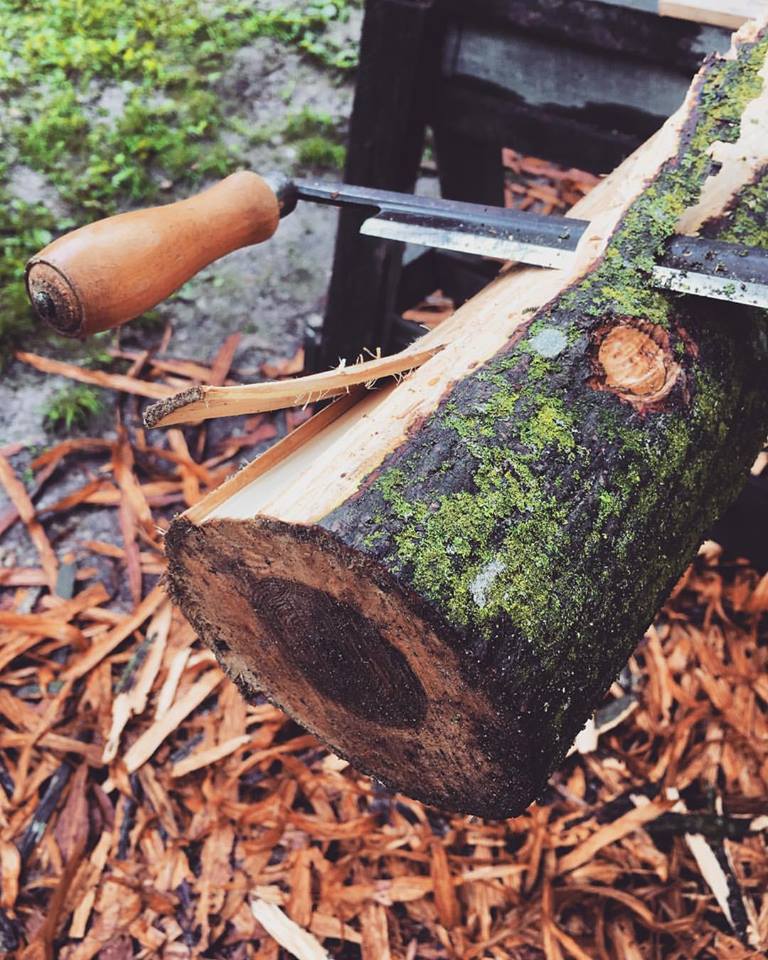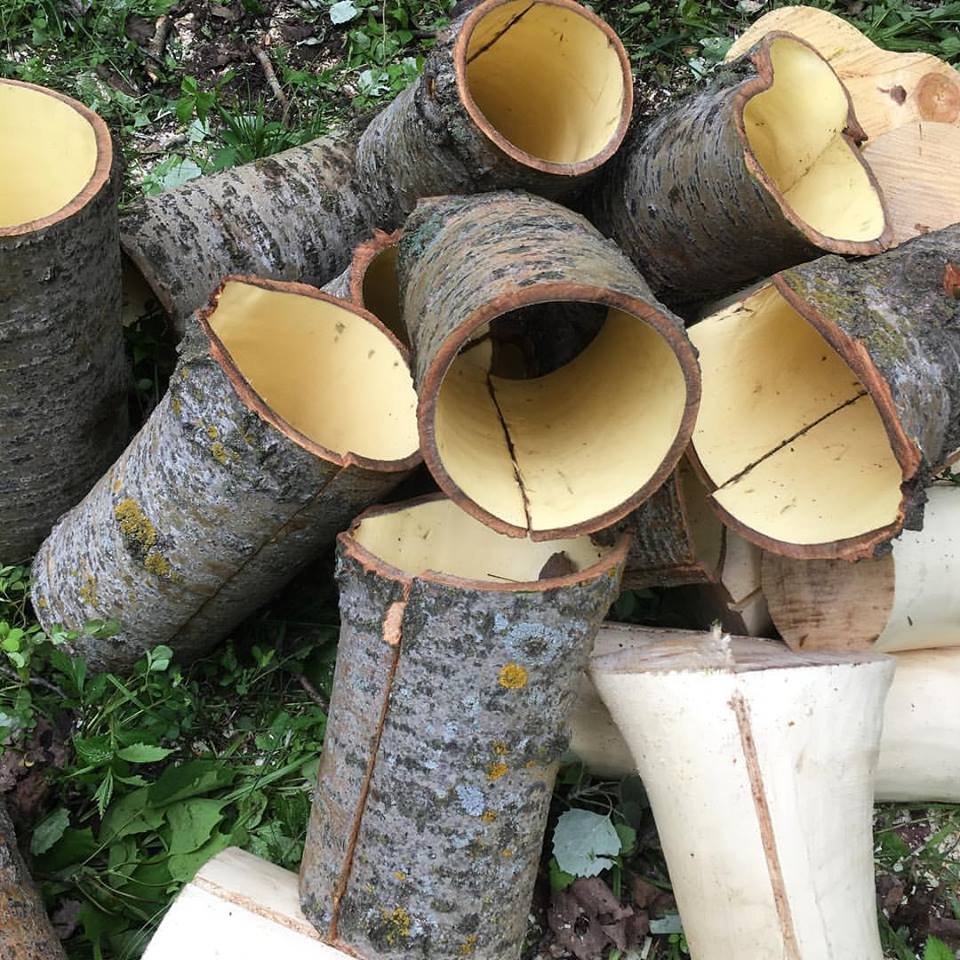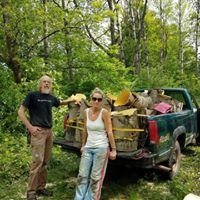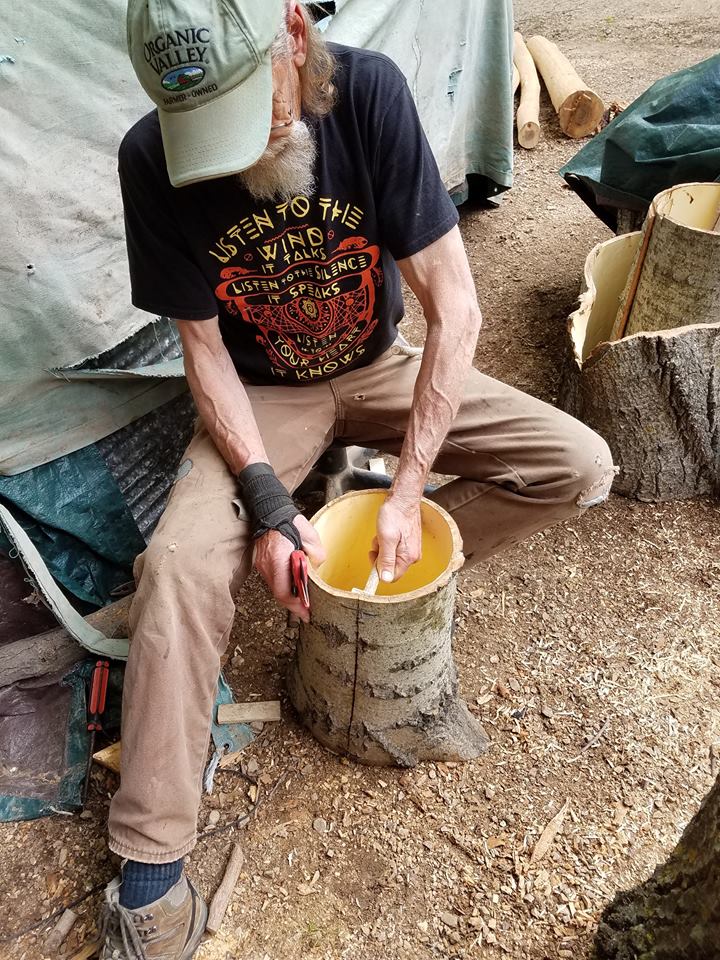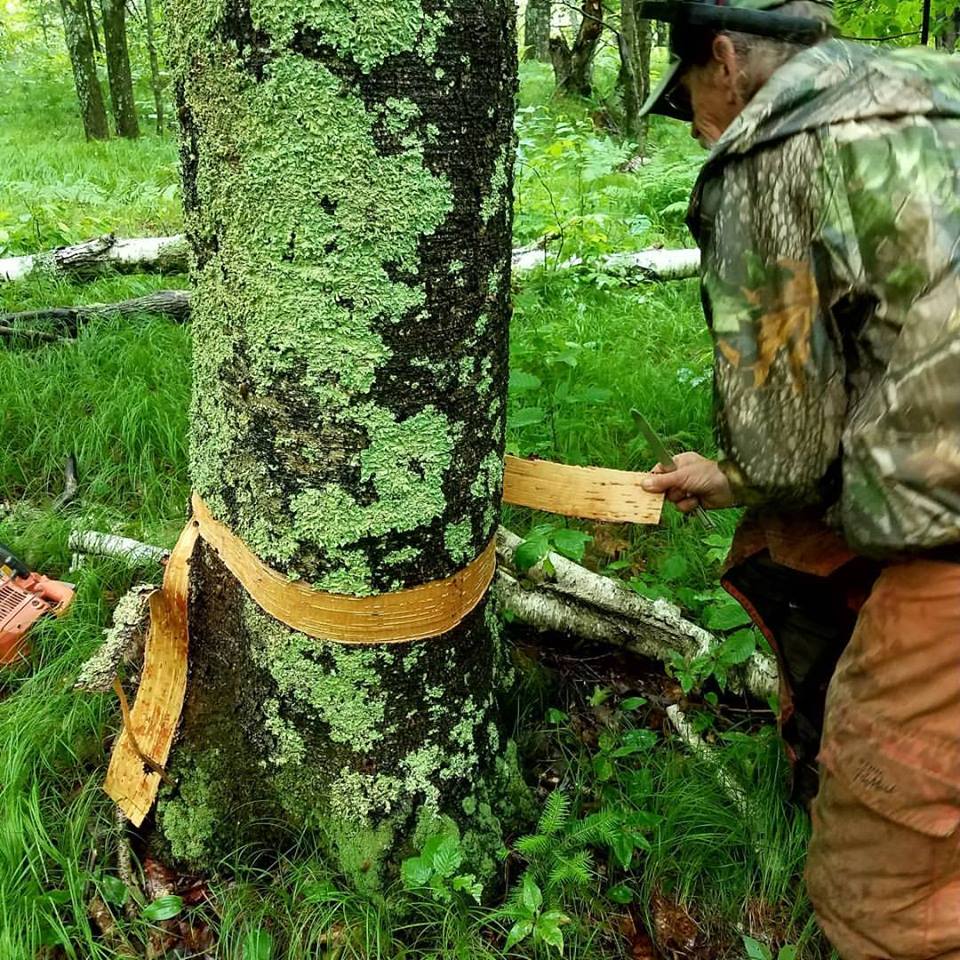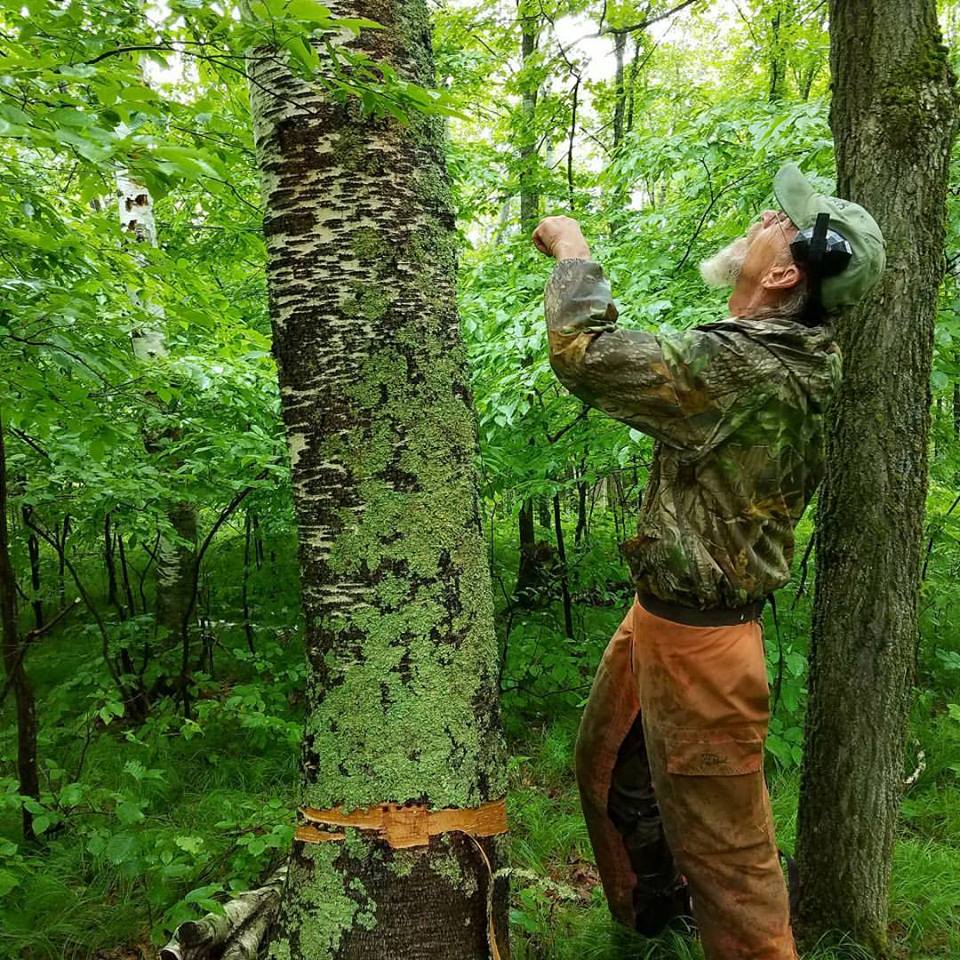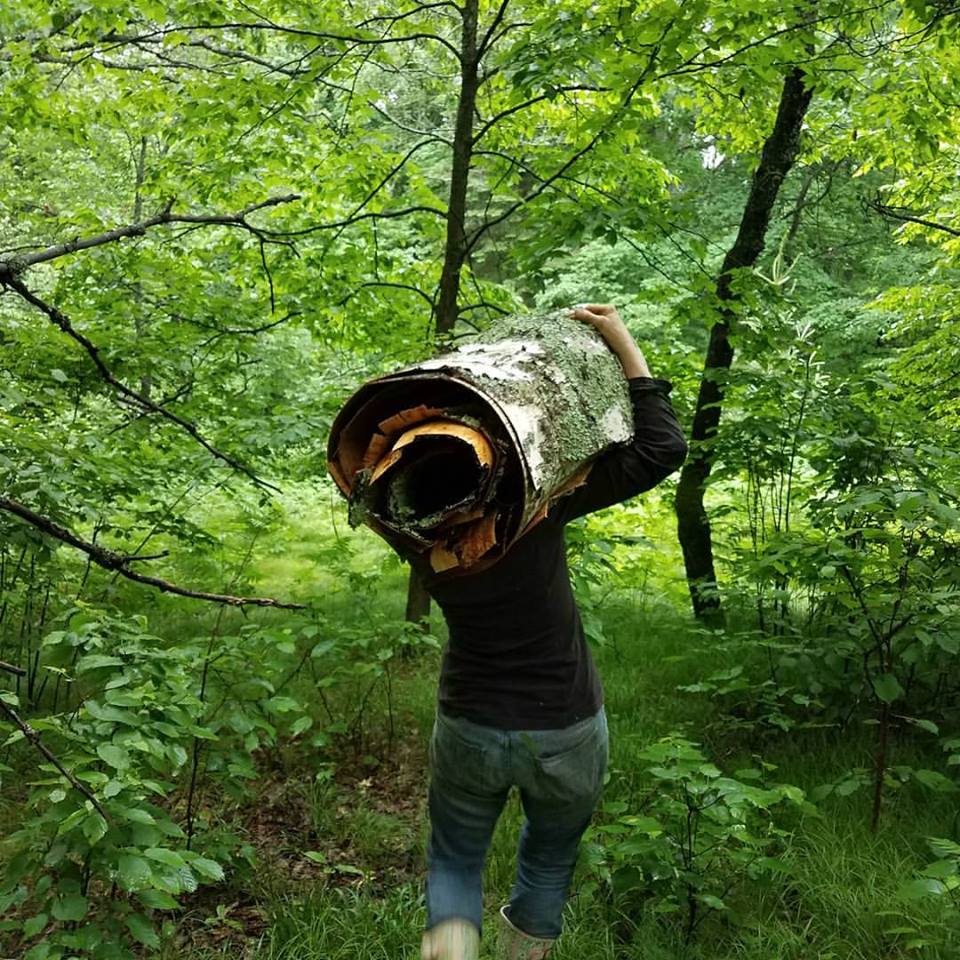Peeling Trees and Sustainability Practices - Part 1
Many people wonder how we get the bark off of trees, and whether we harm the trees in the process. In this two part series, we will talk about the process by which we peel the trees, how we source them, and the sustainability practices that we use when we harvest trees for their bark.
We peel three different trees for their bark: the Poplar tree for use in our Poplar Bark Baskets, the Birch tree for use in our Birch Bark frames, and the Bitternut Hickory tree, of which we use the inner bark to lace up the Poplar bark baskets.
Each year in the spring, when the trees start putting out leaves after their winter dormancy, simple sugars and other nutrients that were stored in the roots are transported to the new buds in the canopy. As the leaves develop, photosynthesis begins and new growth starts in the trunk and the branches. This new growth appears as a slime like layer between the bark and the wood. For a short time, the bark is not adhered to the trunk of the tree. This is why we are able to peel the bark off of the tree.
Our peeling season usually starts in early May with the Bitternut Hickory. We cut the tree down and take it back to our shop. We then use a draw shave tool to shave the outer bark of the hickory off of the log. Once the outer bark is off, we can cut strips of the inner bark and easily peel it off of the wood. Check out our video here to see the process.
The peeling season continues with the Poplar tree. These trees get cut down and then bucked into logs which are the size of the baskets we wish to make from them. We use the bark from the base of the trunk all the way up to some of the smaller branches, which we use for utensil baskets. The logs are peeled in the woods, then taken back to the shop for the drying process before they can be made in to baskets. Here are some pictures of this process. You can find two videos of the process here and here.
Our peeling season ends in June with the Birch tree. These trees can be peeled while they are still standing or once they have been cut down and are laying on the ground. Using a very shallow cut, we can the birch bark off the tree, often in one whole piece. We roll these up to take back to the shop, then press them flat to keep them from curling as they dry. To see more of the process, check out our videos here and here.
Even after 25 years of peeling bark from trees, we still are amazed at this annual phenomenon.
Check back soon for the second part of this series on how we source our trees and the sustainability practices we use.
